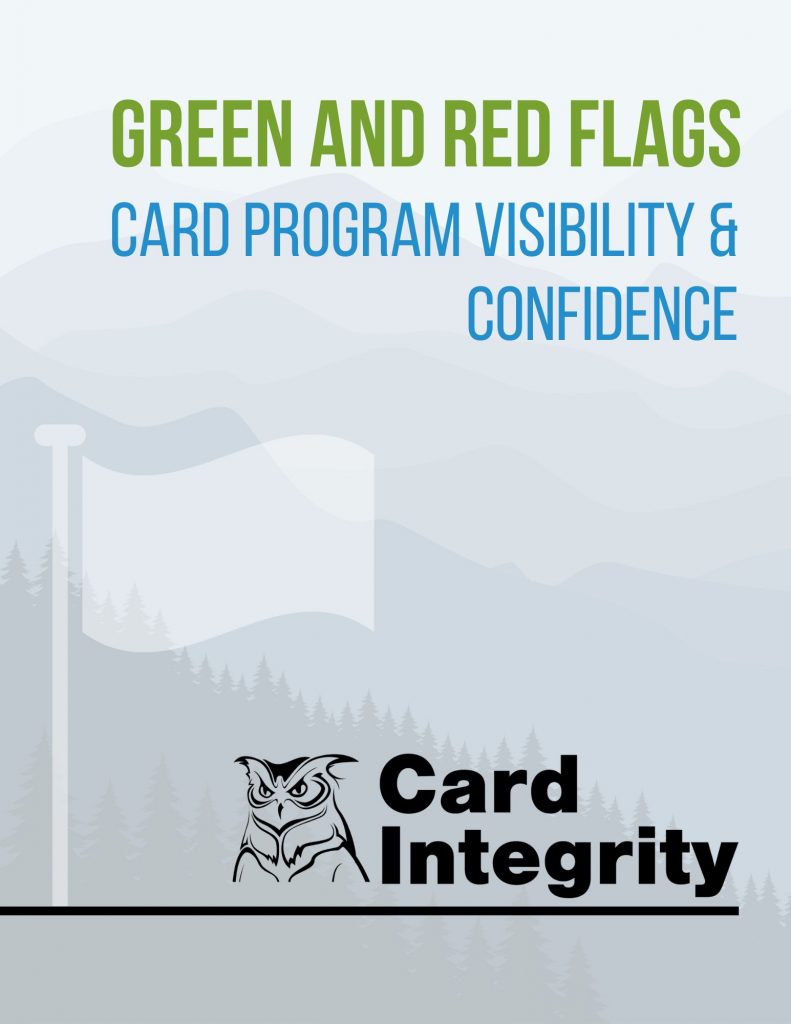Communication. It’s a simple word, and it’s a simple action, and yet the lack of it threatens a commercial card program’s success. Are you communicating to your employees what they need to know? Here are two of the most important internal controls that managers need to communicate to cardholders to ensure a successful card program.
Your Policies and Procedures
Your commercial card (or travel card) policies and procedures are essential. They are the very foundation of your program. But policies and procedures don’t mean a thing if your employees aren’t aware of them. When it comes to setting your policies and procedures, you can’t “set it and forget it.” Setting policies and communicating policies go hand in hand.
Failure to communicate policies and procedures can lead to a lack of knowledge, which can then result in unintentional misuse of credit cards. Worse yet, those intending to commit fraud have been handed — directly by you — the excuse of “But I didn’t know!” Since you didn’t communicate well, that excuse can appear to be valid.
But it’s important to go a step further with communication — to make not only make employees aware of your policies and procedures but to educate your employees as well.
In our article, “When ignorance is not so bliss: Connecting the lack of training with the misuse of P-Cards”, we discuss at length the importance of company policies and procedures, and why training is the best way to ensure that your employees not only know this information but also understand it.
Drawing the Communication Line
Communication is good, but over-communicating is not. If a cardholder normally exhibits good purchasing habits, bombarding him or her with nit-picky mistakes will only serve to discourage the good behavior. To avoid over-reporting, be selective. Rather than sending cardholders every single alert, choose and communicate only the top, most essential alerts that truly threaten to damage your program.

Additionally, you can further improve the communication and increase program visibility and confidence by communicating positive purchasing behavior to employees as well. We discuss this more in our article “Green Flags: Communicating Positive Purchasing Behavior to Increase Visibility and Confidence“.
Address Cardholder Errors
It’s true — we all make mistakes. But whether they are deliberate or not, if errors on the part of your cardholders aren’t addressed, they are bound to be repeated and weaken your card program. Admittedly, it’s not always easy to communicate negative news to employees, and often that will keep management from communicating at all. But getting over that hurdle is an important step in strengthening your system.
When a review of an employee’s transaction uncovers an “alert” in behavior, one of the positive results of communicating that alert to the employee is called the “Hawthorne Effect.” The theory behind the Hawthorne Effect is that a person who believes he or she is being watched will correct his or her behavior accordingly and will be less apt to misbehave in the first place.
Such communication also gives managers the opportunity to correct the card usage, and if necessary, warn or administer any consequences for repetitively bad behavior.
Moreover, via any emailed communication, you can attach evidence that supports your claims and can demonstrate to the employee exactly how transactions are being mishandled — and how the employee can do things differently — that is, correctly — in the future.
Discover More Tips
To discover more tips that will help you look out for and prevent fraud this holiday season, download our new, free, comprehensive eGuide, “Green and Red Flags: Card Program Visibility & Confidence,” today to learn more about the importance of identifying and communicating green and red flags in cardholder purchasing behavior. With actionable solutions, this guide has valuable tips and advice on specific green flags that can strengthen your internal controls and processes. To download your copy of the eGuide please fill out the provided form, and a link to a PDF copy of the eGuide will be made available to you.




